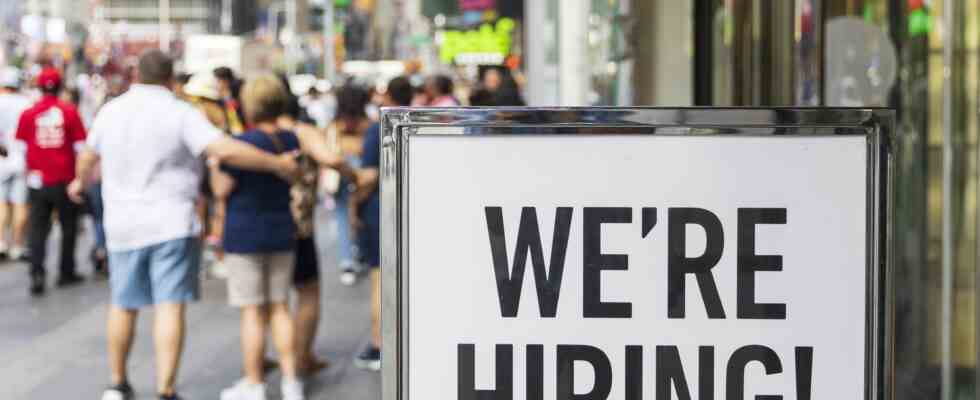Status: 02.09.2022 4:07 p.m
The pace of job growth in the US has slowed somewhat. However, this should not prevent the US Federal Reserve from raising interest rates sharply.
The US economy created more jobs than expected in August. Outside of agriculture, 315,000 jobs were added, the Department of Labor announced today in Washington. Economists had expected an average of 298,000 new jobs.
However, there are first slight signs of a slowdown in the job boom in the USA. The increase in jobs in July and especially in June was revised downwards by a total of 107,000 jobs. The strong increase in jobs of more than 500,000 in July turned out to be an outlier.
Why the unemployment rate is rising
In addition, the unemployment rate rose from 3.5 percent to 3.7 percent. However, this is still a level that roughly corresponds to the full employment target of the US Federal Reserve. “Quite a few economists have been warning for a long time that unemployment must rise significantly in order to bring prices down further,” emphasized Jürgen Molnar, RoboMarkets’ capital market strategist.
In addition, the reason for the increased unemployment rate is not a weakening of the US economy and thus lower demand from companies for workers. Rather, significantly more employees than in July were interested in taking up work, as Commerzbank economists Christoph Balz and Bernd Weidensteiner emphasize in an initial reaction to the US data. “This is why the unemployment rate has increased.”
Overall, the report paints the picture of a slight loss of pace in employment, explain the Commerzbank experts. Even so, job growth of over 300,000 remains strong for this part of the business cycle.
Clear course for strong US interest rate hike?
“It is therefore unlikely that the central bank will take this slight easing on the labor market as an opportunity to raise key interest rates by just 50 basis points in September,” say economists Weidensteiner and Balz.
“For the US Federal Reserve, the signal is green to continue with a strong increase in key interest rates on September 21,” agrees economist Bastian Hepperle from Hauck Aufhäuser Lampe Privatbank. The number of vacancies is extremely high, the unemployment rate remains very low and wage pressure remains high.
According to the CME Group’s Fed Watch Tool, the likelihood of a 75 basis point rate hike at the next Fed meeting on September 21 has fallen after the US jobs data: Currently, 60 percent of market participants expect such a sharp rate hike; before the US labor market data, it was still 70 percent.
Dow and DAX on the up
The markets’ initial reaction to the release of the US jobs report is positive. The German share index DAX extends its price gains and rises above the 12,900 point mark. On Wall Street, the leading US index, the Dow Jones, rose by 0.4 percent to 31,770 points at the start of trading.
The dollar, which had been buoyed for weeks on the prospect of a sharp rise in US interest rates, is losing across the board. In return, the euro rises above the dollar parity again. Parity is a one-to-one exchange rate between two currencies.
Powell’s priorities are clear
However, it remains to be seen how sustainable these price reactions are. Experts doubt that the slight weakening of the upward momentum in the US jobs market could lead the Fed to back off from its plan to tighten monetary policy significantly. “There has been a lot of effort in recent weeks to put 75 basis points on the table,” said broker Oanda’s Craig Erlam.
Fed Chairman Jerome Powell made it abundantly clear, not least at the central bankers’ conference in Jackson Hole last week, that fighting inflation and not growth in the US economy is his top priority.

